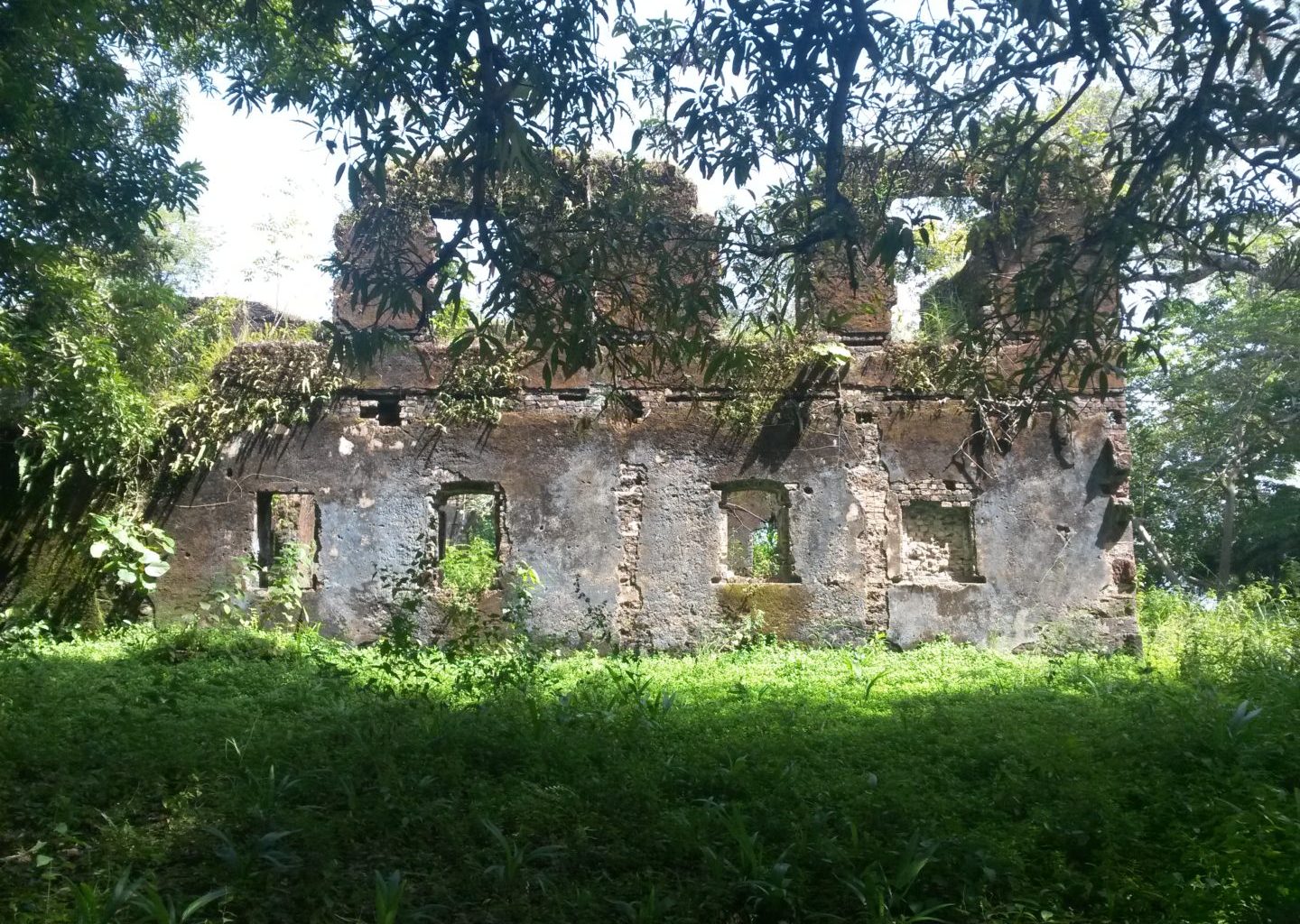A Scottish baronet has been called upon to help preserve his ancestor’s castle in Sierra Leone as a monument to the brutality of 18th century slave trade.
Sir Patrick Grant is the descendant of Alexander Grant who ran the Bunce Island slave castle which featured in a BBC documentary on 6 November. Tens of thousands of slaves from the castle were cruelly transported from Africa to the Americas.
Melbourne Garber is a structural engineer who has been working to preserve Bunce Island for the last ten years. He is a member of Sierra Leone’s Krios community, who returned from the Americas after slavery was abolished.
When asked if he thought Sir Patrick Grant should apologise or make reparations, Garber said: “I would say that Patrick Grant has an opportunity to apologise on his ancestor’s behalf from a moral standpoint. It is not something I would demand of him.”
“However,” he added, “what I would truly like to ask him is to consider supporting the efforts currently ongoing to preserve and stabilise the ruins of the slave castle on Bunce Island, so that it can be preserved for posterity and the descendants of those who paid a price for this evil trade will be able to see and tread where their ancestors once trod.”
Esther Stanford-Xosei, co-vice chair of the Pan-Afrikan Reparations Coalition in Europe (PARCOE), argued that descendants of slave traders should help Africans today. The ideology of “chattel enslavement” still persists, she said.
“The worst of all the enduring injustices created as a result of chattel enslavement is to leave people with the mindset that Africans are inferior and subhuman. This belief system and resultant actions is prevalent in society and has been internalised by many people of African heritage and ancestry,” she told The Ferret.
“I and other members of PARCOE believe it is responsibility of the descendants of Alexander Grant to support Africans to help themselves get out of the mindset,” she added. “One of the concrete things that can be done is for the descendants of Alexander Grant to contribute to repairing the mis-educational legacies of African enslavement by providing funds for the self-help educational initiatives of African heritage community groups.”
Scottish-Jamaican Glasgow SNP councillor, Graham Campbell, said: “Public bodies and private families or businesses which received benefit from the proceeds of chattel slavery should make reparations. This necessary process of reparative justice requires first of all acknowledgement.”
According to the Oxford Dictionary of National Biography, Alexander Grant was born in 1705 as the son of a Scottish barber and farmer. After moving to Jamaica as a young doctor, he became a planter. Many Scots worked in Jamaica in the 18th century to profit from sugar grown by slave labour.
After a spell in London selling slave-grown Caribbean sugar, he joined with Richard Oswald and others to establish a slave factory at Bunce Island castle. He once described the castle as “a territory where my dominion is most absolute”.
On Bunce Island, captured Africans were held before being transported in horrific conditions to places like Georgia and South Carolina where they were forced to work on rice plantations.
Having become rich and powerful from slavery, Grant was able to reclaim a baronetcy which had been granted to an ancestor four generations before but had fallen dormant. The baronetcy was called Grangehill but he renamed it Dalvey, and Grants of Dalvey is the name of the Grant family’s business today.
Alexander Grant died in 1772, with a wealth was estimated at £13 million in today’s money, but slave ownership was to stay in the family for several more generations.
By the time the UK government ordered slaves be freed in 1833, Alexander Grant’s great-nephew Alexander Cray Grant owned 600 slaves. He was awarded compensation worth £1.29m in today’s money for the loss of these slaves, which he complained in parliament was not enough. His former slaves received nothing.
The family’s slave business ended completely in 1848, when a slave rebellion on the Danish colony of St Croix (present-day US Virgin Islands) pressured the Danish government into emancipation.
Commenting on the Grant family’s history, a spokesperson for University College London’s Centre for Study of the Legacies of British Slave-Ownership said: “It is clear that this family fortune was made through the slave economy.”
The present-day inheritor of the Grant family title is 65-year-old Sir Patrick Grant, the owner of a luxury Scottish menswear company called Grants of Dalvey and a 15,000 acre Knoydart deer estate called Glendessary.
When asked about his ancestors’ role in the slave trade, Sir Patrick said: “I am fully aware of the career of Sir Alexander Grant in the early 1700’s. There is no doubt that slavery was an absolutely abhorrent business but I can tell you that the present Grant family have not benefited from it in any way, financially or otherwise, most of it gone by the mid 1800’s.”
“The title was for Jacobite support in the late 1600’s, for which the family were ruined financially. There are literally millions of people in Britain today whose ancestors had some involvement in the slave trade – there was a recent BBC documentary about this. Such was the morality 250 years ago. Thankfully human rights have developed considerably since then.”
When Melbourne Garber’s request for funding was put to him, he replied: “I would be delighted to hear further about the Bunce Island restoration project and suggest you put them in touch with me.”
The government of Sierra Leone is trying to protect Bunce Island from coastal erosion and rising sea levels, while developing the site’s visitor infrastructure to facilitate tourism. The project has received funding from the World Monuments Fund and the US Embassy as Bunce Island is considered an important site for US history.
Photo of Bunce Island castle today thanks to Pierre Chrzanowski, CC0, from Wikimedia Commons. Picture of Bunce Island from an original watercolor by Joseph Corry, 1805, via Wikimedia Commons.














